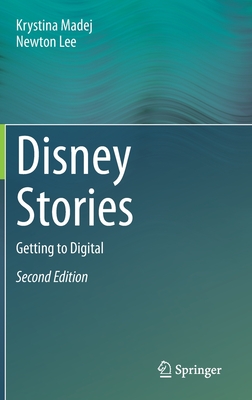Developing Digital Short Films
暫譯: 數位短片製作
Sherri Sheridan
- 出版商: New Riders
- 出版日期: 2004-04-22
- 售價: $1,450
- 貴賓價: 9.5 折 $1,378
- 語言: 英文
- 頁數: 448
- 裝訂: Paperback
- ISBN: 073571231X
- ISBN-13: 9780735712317
已絕版
買這商品的人也買了...
-
 計算機組織與設計--軟硬體界面第二版 (Computer Organization & Design, 2/e)
計算機組織與設計--軟硬體界面第二版 (Computer Organization & Design, 2/e)$680$537 -
 作業系統概念 (Operating System Concepts, 6/e Windows XP Update)
作業系統概念 (Operating System Concepts, 6/e Windows XP Update)$780$741 -
 ASP.NET 程式設計徹底研究
ASP.NET 程式設計徹底研究$590$466 -
 Windows 程式設計 (Programming Windows, 5/e)
Windows 程式設計 (Programming Windows, 5/e)$990$782 -
 鳥哥的 Linux 私房菜─基礎學習篇增訂版
鳥哥的 Linux 私房菜─基礎學習篇增訂版$560$476 -
 PCI Express System Architecture (Paperback)
PCI Express System Architecture (Paperback)$3,360$3,192 -
 2004 最新 Linux 網管人才培訓手冊
2004 最新 Linux 網管人才培訓手冊$700$553 -
 SCJP‧SCJD 專業認證指南 (Sun Certified Programmer & Developer for Java 2 #310-305 與310-027)
SCJP‧SCJD 專業認證指南 (Sun Certified Programmer & Developer for Java 2 #310-305 與310-027)$850$723 -
 組合語言 (Assembly Language for Intel-Based Computers, 4/e)
組合語言 (Assembly Language for Intel-Based Computers, 4/e)$680$612 -
 人月神話:軟體專案管理之道 (20 週年紀念版)(The Mythical Man-Month: Essays on Software Engineering, Anniversary Edition, 2/e)
人月神話:軟體專案管理之道 (20 週年紀念版)(The Mythical Man-Month: Essays on Software Engineering, Anniversary Edition, 2/e)$480$379 -
 JSP 2.0 技術手冊
JSP 2.0 技術手冊$750$593 -
 建構嵌入式 Linux 系統
建構嵌入式 Linux 系統$780$616 -
 Linux 網路管理實務: 調校、帳號、監控、安全
Linux 網路管理實務: 調校、帳號、監控、安全$580$493 -
 Embedded Linux 嵌入式系統原理與實務, 2e
Embedded Linux 嵌入式系統原理與實務, 2e$760$646 -
 CCNA 認證教戰手冊 Exam 640-801 (CCNA Cisco Certified Network Associate Study Guide, 4/e)
CCNA 認證教戰手冊 Exam 640-801 (CCNA Cisco Certified Network Associate Study Guide, 4/e)$780$663 -
 FreeBSD 5.x 架設管理與應用
FreeBSD 5.x 架設管理與應用$490$382 -
 JSP 與 Servlet 500 個應用範例技巧大全集
JSP 與 Servlet 500 個應用範例技巧大全集$590$460 -
 MCAD/MCSD 專業認證訓練手冊─使用 Visual Basic.NET 與 C# .NET 開發 XML Web Service 與伺服器元件(MCAD/MCSD Self-Paced Training Kit: Developing XML Web Services and Server Components with Microsoft Visu
MCAD/MCSD 專業認證訓練手冊─使用 Visual Basic.NET 與 C# .NET 開發 XML Web Service 與伺服器元件(MCAD/MCSD Self-Paced Training Kit: Developing XML Web Services and Server Components with Microsoft Visu$890$703 -
 Windows CE 嵌入式系統理論與實務
Windows CE 嵌入式系統理論與實務$680$537 -
 最新 JavaScript 完整語法參考辭典 第三版
最新 JavaScript 完整語法參考辭典 第三版$490$382 -
 CMMI Distilled 中文版 (CMMI Distilled, 2/e)
CMMI Distilled 中文版 (CMMI Distilled, 2/e)$450$383 -
 Windows 驅動程式設計指南 (Programming the Microsoft Windows Driver Model, 2/e)
Windows 驅動程式設計指南 (Programming the Microsoft Windows Driver Model, 2/e)$890$703 -
 RFID 技術與應用
RFID 技術與應用$480$408 -
 $675LPIC 1 Exam Cram 2: Linux Professional Institute Certification Exams 101 and 102 (Paperback)
$675LPIC 1 Exam Cram 2: Linux Professional Institute Certification Exams 101 and 102 (Paperback) -
 程式之美-微軟技術面試心得
程式之美-微軟技術面試心得$490$387
相關主題
商品描述
The film market is shifting toward traditional desktop technology to create productions...digitally. Unlike traditional film production, though, digital films require producers to employ a different pre-production process. Developing Digital Short Films explores how unique character and set designs, bluescreen ideas, special effects, and simple 2D character animation techniques can be used as narrative devices for telling stories. Part One focuses on generating visual ideas that are ideal for digital production and creating a short film script. Part Two focuses on the visual pre-production of a short film and the issues that go through a filmmaker's mind as they struggle with how best to present their stories; this includes topics like 101 camera shots, frame composition, developing a visual look and feel, color maps, and creating storyboards and animatics. Part Three explores the different production environments of DV, 2D and 3D, and how they shape the telling of stories based upon the technological strengths of each style.
Table of Contents:
Introduction.
I. DIGITAL STORYTELLING.
II. VISUALIZING YOUR SCRIPT.
III. CREATING DIGITAL SHORT FILMS FOR DIFFERENT PRODUCTION STYLES.
商品描述(中文翻譯)
電影市場正朝向傳統桌面技術轉變,以數位方式創作作品。與傳統電影製作不同,數位電影要求製片人採用不同的前期製作流程。《開發數位短片》探討了如何利用獨特的角色和場景設計、藍幕概念、特效以及簡單的2D角色動畫技術作為敘事工具來講述故事。第一部分專注於生成適合數位製作的視覺創意和創作短片劇本。第二部分專注於短片的視覺前期製作,以及電影製作人在思考如何最佳呈現故事時所面臨的問題;這包括101種鏡頭、畫面構圖、發展視覺風格、色彩圖以及創建故事板和動畫分鏡。第三部分探討了DV、2D和3D的不同製作環境,以及它們如何根據每種風格的技術優勢塑造故事的講述。
目錄:
引言
充分利用本書。成為更好的數位電影製作人。不要讓任何事情阻止你製作電影。
I. 數位敘事
1. 為數位短片生成創意。
開始故事概念過程。角色。情節。主題。使用數位工具創作原創電影。為數位短片生成原創想法。針對軟體能力進行腦力激盪。納入情節目標。最終故事概念句以供推銷。最終故事想法。
2. 創建原創角色、主題和視覺隱喻。
創建強而有力的原創角色。在電影中發展主題。使用隱喻和符號講述故事。
3. 發展情節要點。
亞里士多德戲劇。創建角色弧。短片情節要點。長片的情節要點。撰寫短期劇本。
4. 撰寫場景、衝突和短劇本。
索引卡的樂趣。三幕結構以發展場景。構建個別場景。通過衝突推進故事。為場景添加潛台詞。撰寫對話。撰寫短劇本。
II. 視覺化你的劇本
5. 鏡頭視覺化。
製作最終故事板。確定組織結構。101種鏡頭用於故事板設計。設計鏡頭。草擬粗略的俯視圖。構圖你的鏡頭。為你的鏡頭創造深度。創建故事板。
6. 21世紀的場面調度。
發展視覺風格。發展數位製作風格。創建視覺表達的角色。發展場景設計。概念燈光設計。發展色彩調色板。
7. 敘事聲音設計。
良好聲音的重要性。觀影室揚聲器。劇本中的聲音。為聲音拆解你的劇本。為每個場景創建聲音氛圍。利用不同的聲音來源。創建原創音效。利用畫外音。為觀眾創建聲音空間。聲音作為視角。設計對話風格。將聲音與鏡頭匹配。心靈空間聲音設計。無聲拍攝。聲音問題。
8. 前期製作故事編輯選擇。
編輯信息對於講故事是自然的。並列作為編輯的核心。打印每個鏡頭的靜態圖像。雜項編輯提示。對非線性編輯的最終思考。
III. 為不同製作風格創建數位短片
9. 數位增強的敘事技術。
使用數位視頻技術講述視覺故事。使用DV講故事的優勢是什麼?如何使用透明區域結合圖層。數位後期創建鏡頭。用視頻圖層為靜態照片動畫。DV角色設計想法。數位增強的角色設計技術。創建虛擬場景。使用文本和動態圖形講述故事。創建簡單的敘事數位效果。為你的電影定義視覺風格。為DV素材添加2D動畫外觀。使用色彩操控發展敘事想法。其他數位技術。
10. 使用現代2D動畫擴展我們的現實。
使用2D動畫進行視覺敘事的優勢。動畫原則。現代2D動畫設計想法。簡單的2D數位動畫技術。定義你自己的2D動畫風格。
11. 使用3D動畫展示你能想像的任何事物。
3D的良好敘事用途。為3D故事想法進行腦力激盪。設計原創3D角色。利用視覺主題。將演員附加到你的3D角色。設計原創3D場景。創建你自己的3D動畫風格。
索引。












